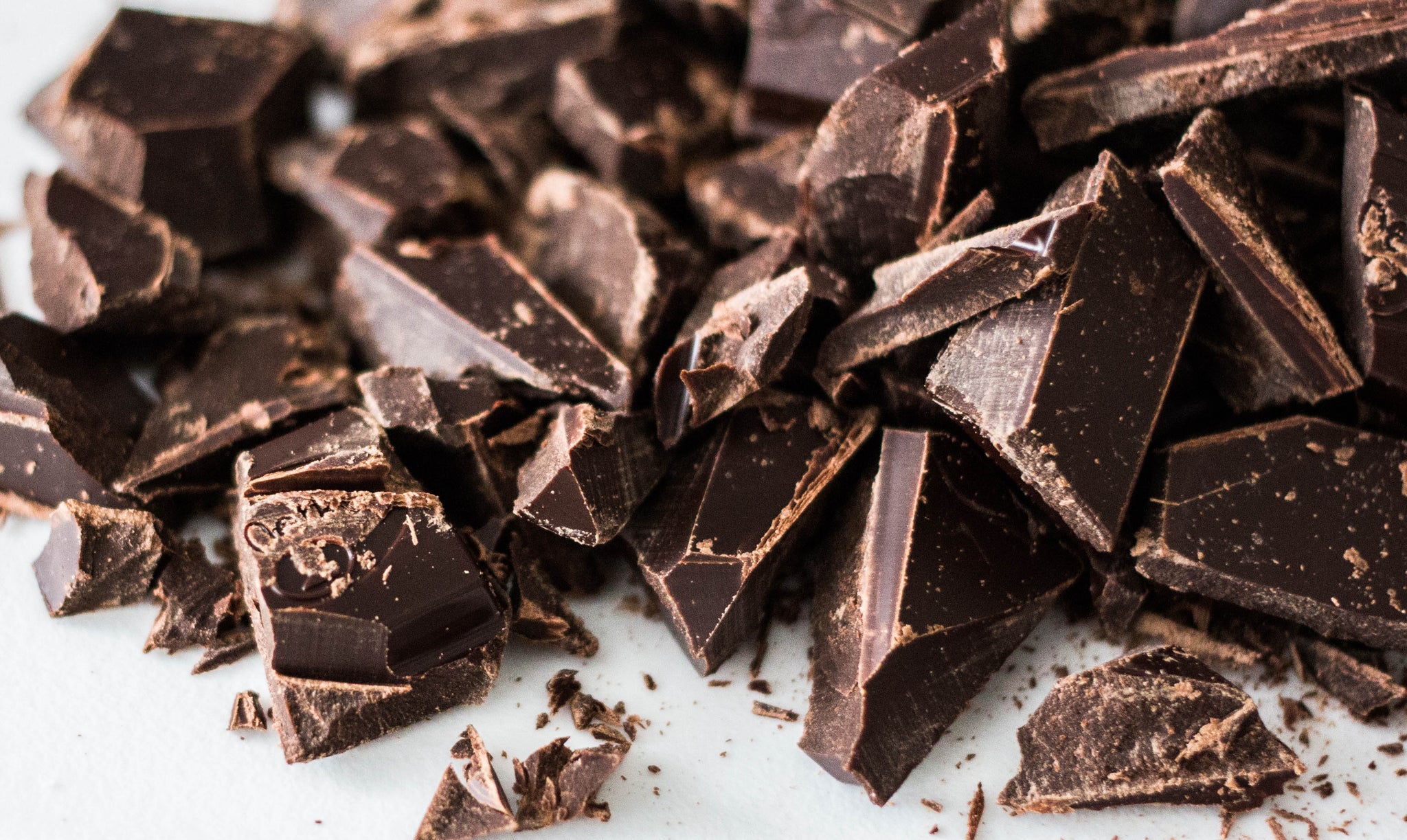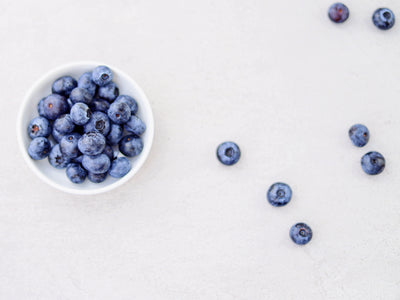10 Incredible Herbs, Spices and Botanicals to Boost Wellbeing

From ginger to green tea, cocoa to coriander, for thousands of years, plants have been used not just for food and flavouring - but for their medicinal effects, too.
With natural approaches to health enjoying a recent renaissance, we're investigating which supplements are worth trying - and why.
Below, we reveal 10 of our all-time favourite herbs, spices and botanicals, highlighting the scientific studies that prove their healing properties and evidence their effectiveness.
Discover which tea to drink to soothe IBS, how turmeric could triumph in the fight against Alzheimer’s and the store cupboard spice that will curb your carb cravings.
What once looked like everyday ingredients will soon become your own personal kitchen apothecary. So, go on, what are you waiting for? Nature’s medicine cabinet beckons…
Chocolate

Chocolate is good for you.
No need to reach for the specs - you read that right - chocolate has been scientifically proven to boost health.
Of course, there are some caveats. To get real benefits from eating chocolate as we know it, without chewing on a raw cocoa bean (not so tasty), it needs to be dark. Properly dark too - we’re talking 85% cocoa content and above. This is because the more cocoa beans have been processed, the less mighty their powers.
Packed with high concentrations of magnesium, flavonoids, polyphenols, B-vitamins and free-radical-fighting antioxidants, cocoa is broken down in your colon to produce nitric oxide, which expands your arteries and is great for your cardiovascular system.
Regular consumption (experts seem to agree on a recommended dose of 30g-60g/day) of dark chocolate has been shown to improve memory,(1) boost mood,(2) lower blood pressure(3) and improve heart health(4) - thereby leading to a possible reduction in stroke and diabetes.
Impressively, eating a single dose of 85% dark chocolate was found by researchers (5) to “buffer the reactivity” of “blood pressure, heart rate and mean arterial pressure during mental stress” in young women, leading the team to conclude that “dark chocolate might have a beneficial effect during [periods of] acute stress.”
HOW TO TAKE IT:
As dark as possible! Anywhere from 85% to 100%. You can also add raw cacao to your desserts & smoothies.
Ginkgo Biloba

“Revered for its beauty and longevity, the ginkgo is a living fossil, unchanged for more than 200 million years” - Roger Cohn, The Life Story of The Oldest Tree on Earth(6)
Originating from China, and described as(7) a “living link to the dinosaurs”, the ancient Ginkgo Biloba tree sprouts distinctive, fan-shaped leaves and foul-smelling fruit. It is thought to be the oldest tree on earth, and turns a bright, sunshine-yellow in the autumn.
But the Ginkgo tree does more than sport pretty-looking leaves and stinky fruits; it is widely prized for its medicinal properties - particularly in relation to brain function and memory.
A growing body of scientific study(8) “confirms that Ginkgo biloba extract (GBE) reduces oxidative stress and improves mitochondrial respiration”, meaning it may prove useful in “preventing or slowing down the progression of Alzheimer’s Disease”.
According to research,(9) ginkgo biloba extract (GBE) appears to “improve neurological function and dependence compared with conventional therapy” and so can also be considered for “an adjunctive treatment for stroke”.
Further studies have supported this,(10) finding “evidence of the potential efficacy of Ginkgo biloba EGb 761 in enhancing certain neuropsychological/memory processes of cognitively intact older adults, 60 years of age and over.”
HOW TO TAKE IT:
Ginkgo Biloba is commercially available as capsules, tablets, liquid extracts and also dried leaves, for making tea.
Milk Thistle

You may not have heard of it, but when it comes to antioxidants, glutathione is up there with the big hitters.
What welcome news then that milk thistle, a flowering herb with vibrant purple petals and a prickly green bulb, helps the body to(11) create glutathione naturally.
The active ingredients in milk thistle are a group of compounds known collectively as ‘silymarin’.
Often used to help treat(12) liver damage and liver disease, silymarin “acts as an antioxidant by reducing free radical production and lipid peroxidation, has antifibrotic activity and may act as a toxin blockade agent by inhibiting the binding of toxins to the hepatocyte cell membrane receptors.”
Research(13) has shown “promising effects” of the use of milk thistle against liver cancer, and even in inhibiting(14) “multiple cancer cell signaling pathways in preclinical models.”
The milk thistle plant and its active compounds, silymarin, have also been traditionally used(15) as a natural remedy for the treatment of various brain disorders.
Recent scientific research(16) has examined the basis of this traditional use more thoroughly, using electron microscopic imaging to show that milk thistle may be “a novel therapeutic agent for the treatment of Alzheimer’s Disease.”
Interestingly, Silymarin also appears to play (17) a crucial role in preventing bone damage and healing bone fractures – particularly in post-menopausal women, who are often more susceptible to osteoporosis.
HOW TO TAKE IT:
Visit your local health food store where milk thistle should be on offer in a variety of forms, from capsules and tablets to tea.
Green Tea

After water, tea is the most widely consumed(18) drink in the world - and it’s easy to see why. Its ability to soothe, ground, comfort and calm is seemingly boundless.
Whilst the therapeutic properties of all types of tea have long been prized by ancient civilisations across the globe, it is the super powers of green tea in particular that have been the focus of scientific studies in recent years.
Green tea is known to be an especially rich source of flavonoids; bioactive compounds that can reduce inflammation and oxidative stress in the body. So, it’s perhaps not surprising that research shows green tea’s ability(19) to help those with inflammation-driven diseases such as IBS or arthritis.
A Japanese study of more than 40,000 adults found that those who drank 3-4 cups of green tea a day had a reduced risk(20) of dying from cardiovascular disease, compared to those who drank 1 cup or no cups.
And, in a survey of thousands of adults from Greece,(21) those who drank green tea were more likely to score higher on the ‘healthy aging index’, as well as having a lower risk of high blood pressure.
According to researchers(22): “Habitual green tea consumption is associated with protection against several types of cancer and lower all-cause mortality, while total consumption of tea has shown beneficial changes in psycho-cardiological outcomes, such as reduced risk of cardiovascular disease and type 2 diabetes, lower blood pressure, reduced risk of developing hypertension in older adulthood, and decreased risk of cognitive impairment.”
There’s only one thing for it...time to get a brew going!
HOW TO TAKE IT:
The clue's in the name with this one; simply add hot water to your green tea bags or loose green tea leaves and you're good to go. Choose organic varieties to reduce your exposure to harmful pesticides.
Turmeric

A vivid bolt of orange encased in papery skin, turmeric is native to Southeast Asia and has been used for centuries to treat a variety of ailments(23) - mainly thanks to its proven anti-inflammatory properties.(24)
Inflammation is a root cause of many health conditions, including heart disease(25) and potentially even cancer.(26)
Curcumin, the active compound in turmeric, is thought to block the body’s inflammatory response pathway by inhibiting production of pro-inflammatory genes,(27) and has been extensively studied for its all-round disease-fighting potential.(28)
The anti-inflammatory properties of turmeric may make it a particularly useful tool in the treatment of joint pain and mobility problems.
Research suggests(29) that curcumin could “contribute to the regeneration of cartilage”, possibly easing painful inflammatory conditions like osteoarthritis.
Traditionally used in Ayurvedic and Chinese medicine as a treatment(30) for diabetes, recent research(31) has indicated that curcumin could also be effective in reducing “depressive symptoms in patients with major depression.”
Other studies have similarly pointed to curcumin’s positive cognitive effect, with one paper showing(32) “a significant improvement of the behavioral symptoms in Alzheimer’s Disease with turmeric treatment.”
Terming it “the master spice” because of its wide-reaching health benefits, Conscious Spaces Founder Tara Williams recommends looking out for curcumin supplements that have been fermented, as this can, she says, “greatly increase its bioavailability” (how easily a substance is absorbed by the body). Another option, says Tara, is “a curcumin supplement that contains piperine” - a substance found in black pepper that can increase curcumin absorption by 2,000%.(33)
It’s worth noting that some people can be sensitive to piperine, so always make sure you test for such sensitivities before taking any supplement.
HOW TO TAKE IT:
Buy a good quality powdered turmeric, or opt for fresh turmeric root and grate it straight into your cooking or add it to juices. Turmeric is also available in supplement form, when it is usually called 'circumin'.
Resveratrol

Found in grapes and berries, resveratrol is thought to act as an antioxidant in the body.
Because resveratrol is concentrated mostly in grape skins and seeds, red wine provides a surprisingly good source of this natural antioxidant.
The majority of scientific research into the benefits of resveratrol, however, has focused on the supplement forms of the compound, which contain higher concentrations than those you could achieve through eating food or drinking red wine alone.
In recent years, resveratrol has been the subject of intense interest due to its apparently quite unique anti-ageing properties.(34) These include cardiovascular benefits,(35) possible benefits for menopause-related cognitive decline,(36) mitochondrial stimulation(37) and an antimicrobial effect.
For those looking to age gracefully, resveratrol shows real promise, with studies citing(38) its ability to contribute to the stimulation of collagen production (hello plump skin), as well as protecting cells against the effects of free radicals and UV radiation on the skin – therefore slowing down signs of skin aging.
Research suggests(39) that resveratrol also has “good potential” for use as a “highly efficient therapeutic agent to deal with deadly lung carcinogenesis” - making it of interest within the field of lung cancer treatment.
HOW TO TAKE IT:
A diet that includes red grapes and berries (and the odd glass of red wine!) will automatically contain naturally occurring resveratrol, but to significantly up your dose, try taking it in supplement form.
Cloves
 Often stuffed into resplendent Christmas hams or used to flavour steaming mugs of mulled wine, cloves are usually associated with all things festive. But did you know they’re also regarded as a potent antioxidant?
Often stuffed into resplendent Christmas hams or used to flavour steaming mugs of mulled wine, cloves are usually associated with all things festive. But did you know they’re also regarded as a potent antioxidant?
Of all the spices in your store cupboard - including mint, pepper, cloves and cinnamon - scientists have discovered(40) that cloves may have the highest levels of antioxidant activity.
Research shows that this quality isn’t diminished by heat either, with the antioxidant activity of cloves “retained even after boiling for 30min at 100°C.”
Scientific data(41) also suggests that eating 1 to 3g of cloves per day may be beneficial for people with type 2 diabetes, thanks to their apparent ability to “improve insulin function”.
Another study(42) on the medicinal effects on cloves demonstrated – for the very first time – the “significant anticancer activity of cloves in mammary gland carcinoma model using both in vivo and in vitro methodological approaches.”
Based on their research, the scientists involved concluded that “regular consumption of cloves (several times per week) could be beneficial for the risk reduction of breast cancer in humans.”
HOW TO TAKE IT:
Whenever possible, buy whole cloves instead of ground, since the latter loses its flavour quicker. You can add the cloves whole to cooking, or grind them yourself using a coffee bean grinder.
Ginger

Fiery, zesty, sweet - ginger is powerful in both delicious flavour and health benefits.
The potent medicinal properties it possesses have been known and valued for centuries,(43) with this gnarly little golden root perhaps most commonly used to relieve nausea and ward-off colds and sore throats.
The active compounds found within ginger are thought by scientists to boast significant anti-inflammatory and antioxidant effects, with studies demonstrating(44) ginger’s anti-aging action in the treatment of degenerative disease.
Research has also shown how ginger can improve the symptoms of rheumatoid arthritis,(45) and can work as an effective lipid lowering agent(46) (high levels of lipids in the blood may contribute to cardiovascular disease, so anything that keeps levels low is good news).
Published in the peer-reviewed scientific Journal, Chemical Biological Interactions, one study(47) concluded that the active ingredients in ginger could even potentially “be effectively used in the treatment” of skin cancer.
HOW TO TAKE IT:
Ginger is best enjoyed in its fresh state, grated or diced into cooking or added to hot drinks. You can pick up fresh ginger root at all good supermarkets.
Cinnamon

Beloved by many for the sweet, woody warmth it brings, just a dusting of cinnamon can add instant depth to any recipe.
It has been a cherished spice for thousands of years, both for its unique and exotic flavour – but also its varied medicinal value too.
Recent evidence(48) suggests that cinnamon has wide-ranging health benefits, from antimicrobial, anti-inflammatory and antioxidant activity, to wound-healing properties and even anti-gastric ulcer effects.
Cinnamon has also been found to balance blood sugar levels and reduce carb cravings, making it a very welcome addition to the diet of anyone suffering from diabetes or pre-diabetes.
Another study(49) into the effects of cinnamon showed that it significantly increases levels of sodium benzoate in the brain, which, in turn, boosts brain chemicals known as neurotrophic factors. These neurotrophic factors are responsible for protecting neurons, as well as stimulating the creation of new neurons, all of which could slow the progression of aggressive neurodegenerative diseases such as Parkinson’s and Alzheimer’s.
HOW TO TAKE IT:
Cinnamon comes ground in a powder or whole, as a stick. Ground cinnamon is readily available, but needs to be kept in an airtight container in a dark place. The fresher the better, in terms of flavour and potency. Lots of delicious teas also contain cinnamon, such as Indian Chai. Try adding ground cinnamon to porridge, tagines or using it as a spice rub on meat and fish.
Coriander

Also known as Cilantro or Chinese Parsley, the fragrant Coriander plant possesses medicinal as well as nutritional properties.(50)
With delicate, feathered green leaves, the very first healing benefits of coriander were reported by the ancient Egyptians, with both the leaves and the seeds used to ward off illness. Coriander seeds were even found(51) nestled inside the sacred tomb of the ancient Egyptian pharaoh Ramesses the Great.
Thought to assist with(52) the removal of toxic mineral residue (like mercury and lead) from the body, coriander is often used today as a key component of a detox diet.
Adding coriander to your food is believed by scientists to increase the all-important antioxidant content of your meal; thereby helping to prevent disease-triggering oxidation processes from taking hold.
It seems coriander could also be beneficial for its bacteria-fighting potential.
When tested alongside a number of other key aromatic and medicinal plants, coriander oil was found by researchers to provide “the best antibacterial activity.”
HOW TO TAKE IT:
In its whole, natural state, as a fresh herb. Add the leaves, stalks & seeds to soups, stews, stir fry, curries and salads.
References
- https://www.mdpi.com/2072-6643/11/11/2800
- https://www.ncbi.nlm.nih.gov/pmc/articles/PMC3575938/
- https://academic.oup.com/ajcn/article/88/1/58/4648996
- https://www.mdpi.com/2072-6643/9/7/688/htm
- https://www.tandfonline.com/doi/full/10.1080/07315724.2019.1662341
- https://e360.yale.edu/features/peter_crane_history_of_ginkgo_earths_oldest_tree
- https://e360.yale.edu/features/peter_crane_history_of_ginkgo_earths_oldest_tree
- https://www.ncbi.nlm.nih.gov/pubmed/22784423
- https://www.ncbi.nlm.nih.gov/pubmed/31914035
- https://www.ncbi.nlm.nih.gov/pubmed/12404671
- https://www.ncbi.nlm.nih.gov/pmc/articles/PMC4665566/
- https://europepmc.org/article/med/20564545
- https://www.sciencedirect.com/science/article/pii/S0223523416306353
- https://pubmed.ncbi.nlm.nih.gov/25944486/
- https://pubmed.ncbi.nlm.nih.gov/28025940/
- https://pubmed.ncbi.nlm.nih.gov/21185897/
- https://www.ncbi.nlm.nih.gov/pmc/articles/PMC4665566/
- https://en.wikipedia.org/wiki/Tea#cite_note-Macfarlane-4
- https://www.ncbi.nlm.nih.gov/pmc/articles/PMC5490540/
- https://www.health.harvard.
edu/heart-health/green-tea- may-lower-heart-disease-risk - https://www.ncbi.nlm.nih.gov/pmc/articles/PMC6571865/
- https://www.ncbi.nlm.nih.gov/pmc/articles/PMC4055352/
- https://nccih.nih.gov/health/turmeric/ataglance.htm
- https://www.liebertpub.com/doi/abs/10.1089/107555303321223035
- https://doi.org/10.1038/nature01323
- https://pubmed.ncbi.nlm.nih.gov/12490959/
- https://lpi.oregonstate.edu/mic/dietary-factors/phytochemicals/curcumin
- https://www.ncbi.nlm.nih.gov/pubmed/17999464
- https://www.ncbi.nlm.nih.gov/pmc/articles/PMC4209497/
- https://www.ncbi.nlm.nih.gov/pubmed/24348712
- https://www.ncbi.nlm.nih.gov/pubmed/26610378
- https://www.ncbi.nlm.nih.gov/pmc/articles/PMC3665200/
- https://www.ncbi.nlm.nih.gov/pubmed/9619120
- https://pubmed.ncbi.nlm.nih.gov/18254804/
- https://link.springer.com/article/10.1007/s10557-012-6427-8
- https://www.mdpi.com/2072-6643/9/1/27
- https://www.nih.gov/news-events/nih-research-matters/how-resveratrol-may-fight-aging
- https://www.tandfonline.com/doi/full/10.1080/14764172.2018.1469767
- https://pubmed.ncbi.nlm.nih.gov/27685918/
- https://www.sciencedirect.com/science/article/abs/pii/S095232789990128X
- https://www.fasebj.org/doi/abs/10.1096/fasebj.20.5.A990-b
- https://www.ncbi.nlm.nih.gov/pmc/articles/PMC5661249/
- https://www.ncbi.nlm.nih.gov/pubmed/16117603
- https://www.ncbi.nlm.nih.gov/pmc/articles/PMC6721508/#B53
- https://www.ncbi.nlm.nih.gov/pubmed/30844477
- https://www.ncbi.nlm.nih.gov/pubmed/29747751
- https://www.ncbi.nlm.nih.gov/pubmed/19481070
- https://pubmed.ncbi.nlm.nih.gov/24148965/
- https://pubmed.ncbi.nlm.nih.gov/24349472/
- https://pubmed.ncbi.nlm.nih.gov/25776008/
- https://pdfs.semanticscholar.org/d5b1/dfe562a1227fb7c5823d51e7f5262c16fe12.pdf
- https://www.sciencedirect.com/science/article/pii/S0378874101002999









































